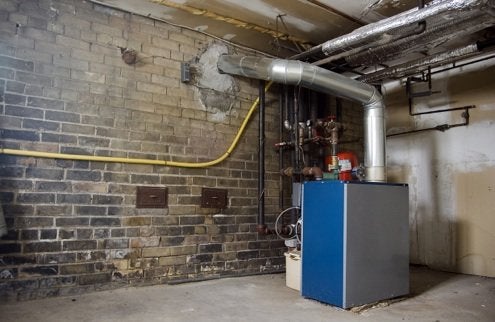
If you are passionate about plumbing and have a passion for building or repairing them, a career as a steamfitter, plumber, or pipefitter might appeal to you. Although the overall economy is volatile, there are periods when construction activity can be low. However, even in times of economic weakness, the demand for plumbing systems is not going away.
Jobs for steamfitters, plumbers and pipefitters
The installation and repair pipelines are part of plumbing jobs. These workers can also install mechanical controls, heating and cooling devices. Some may even install sprinkler systems. Whatever the plumbing job, it is crucial to move fluids or gases through pipes. There are several types of pipe systems and plumbers and pipefitters are needed for each.
Over the next decade, there will be an increase in plumber jobs of approximately 4%. Because of the aging baby boomers and increasing population, there will be a greater demand for plumbers. A new construction or renovation will increase the demand for plumbers. The demand for plumbers will increase due to new regulations regarding fire safety.

Education requirements
You must have completed some formal education to be able to become a steamfitter, plumber, or pipelayer. Many apprenticeship programs are offered through local unions and other industry groups. You may also be eligible to receive a certificate from a community colleges or an associate degree program. The majority of training programs are focused on blueprint reading and practical plumbing and mechanical work. They may also include plumbing code studies and components service and repair.
There are different education requirements for plumbers and steamfitters depending on where they live. New York City has three years licensing requirements, while Onondaga County, New York requires them to be licensed every year. Some municipalities, such as New York City, require continuing education hours to maintain their license. However, continuing education is not required for many smaller cities.
Job duties
A variety of jobs are performed by plumbers and pipefitters at the workplace or in the house. They install, maintain, test, and repair heating and plumbing systems. They might also be responsible for other tasks, such as checking gray water systems and installing automatic commands. Many plumbers and pipelinefitters have an assistant who assists them in their work.
Many apprentices to plumbing and steamfitter trades learn the trade in a four-to five-year apprenticeship. These programs combine classroom and on-thejob training. Apprentices are taught safety, blueprint reading and plumbing code. They also study mathematics, applied Physics, and Chemistry. Apprentices might also work as helpers in other areas such as transporting materials and cleaning work areas.

Career opportunities
There will be 12 percent more job openings for plumbers, pipefitters and steamfitters between 2014 and 2024. This is due to the increase in construction and demand for plumbing services. Employers still face difficulties finding qualified workers, however. O*NET, a source that offers valuable information about workers, is one.
Apprenticeship programs in plumbing, pipefitting, and steamfitting provide students with hands-on training. Apprentices receive 2,000 hours of paid on-the-job training each year and some technical instruction, such as plumbing codes, safety procedures, and blueprint reading. Apprentices are also offered classes in applied physics, chemistry, and mathematics. Some unions offer pre-apprenticeship training programs.
FAQ
What happens if one party doesn't take their side of the deal?
Failure to keep your promises can result in the law permitting the other party to sue you and treat your promise as null. Damages can include interest, court costs and legal fees as well as the amount due.
Can I cancel or terminate my contract at any time?
Yes - but this must be done within 14 days of signing your contract. Your contract can be ended by giving notice in writing up to seven days before the deadline. In some cases, however, you might still owe contractor money for work done.
Is a service agreement a warranty?
A service agreement is not a warranty. It is an agreement between parties to exchange goods or services. If the product is not performing satisfactorily, the customer agrees with the seller to cover the repair or replacement costs. This type of contract is also known as a maintenance contract.
Do I have to think about any additional factors?
Yes. Check your local laws to see what types of projects are allowed and what conditions must be met. Some states require you to get approval from the council to build. Some states only require you to notify them about your plans. For more information, consult your local authorities.
Who pays for the service?
Your SCA specifies which party is responsible for paying for the service. If the service provider is not paid in full, it may have grounds to claim compensation through the courts.
Who is responsible for a Service Agreement
Your service agreement with your customer defines the services you will offer them. It outlines the customer's responsibilities, what you have to do for them, and when they have to pay you.
The service agreement also confirms if there are any additional fees involved for extra services.
A service agreement should cover all terms and conditions. This includes delivery times, payment methods, warranties, and so forth.
If you use this template, you will cover everything in the agreement.
Statistics
- (1) Except as provided in paragraphs (a)(4) and (a)(8) of this section, if the estimated amount of the contract or subcontract is $10 million or more, the contracting officer shall request clearance from the appropriate OFCCP regional office before- (acquisition.gov)
- Don't take their anger personally, they are mad about the situation 99% of the time. (activatemylicense.com)
- (v) Place or places of performance of the prime contract and first-tier subcontracts estimated at $10 million or more, if known. (acquisition.gov)
- While we offer all our high-quality services at competitive prices, we know that many who need our services are on fixed incomes, so we offer a 10 percent discount for seniors and military members. (homeservicecontractorsinc.com)
- Reasonable late fees go up to 25% per year on unpaid sums. (lawdepot.com)
External Links
How To
What is the distinction between a contract and a Service Agreement?
A service agreement describes an agreement in which a provider offers to provide services for a client. It creates an obligation on both parties. The term "service" refers to a company's products, information, advice, etc., but does not include financial services.
A contract is a legally binding document that outlines the terms and conditions of a business relationship. For example, if you buy a product from a retailer, you have purchased a contract because you are obligated to pay for the item later. When you accept employment, you are entering into a contract.
A service agreement does not require any formal documentation. A written service agreement is rarely used in practice. Verbal agreements are more common.
A service agreement offers many advantages over a contract.
-
A service agreement is flexibler than a contractual contract.
-
It allows a service company to change its mind without being penalized.
-
It gives the service greater flexibility in deciding how to deliver the agreed-upon service.
-
It provides a clear record of what was promised.
-
It is simpler to prosecute a service provider.
-
It is less expensive to prepare a service arrangement than a contract.
-
It is less likely it will result in litigation.
-
It is easier to terminate a service agreement than a contractual arrangement.
-
It is more simple to amend a service agreement than a standard contract.
-
Using a service agreement to set up an ongoing relationship is possible.
-
It is possible to divide the cost of drafting service agreements with third parties.
-
If you are drafting a Service Agreement, it is possible for you to include a clause that requires arbitration.
-
It is possible to add provisions regarding confidentiality, non-disclosure, proprietary rights, etc.
-
It is possible, for example, to specify the length of the contract.
-
It is possible for the service agreement to be subject to a certain condition precedent.
-
It is possible for a service provider to be held liable for only negligence, gross negligence, and/or fraud.
-
It is possible limit liability for consequential damages.
-
It is possible to allow the service provider to enter into another agreement with a different customer.
-
In certain situations, notice can be given of termination.
-
You can ask the service provider for a warranty.